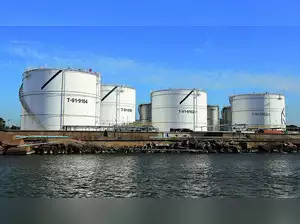Saudi Arabia’s decision to extend its oil production cuts part of a so far largely unsuccessful bid to raise prices may trigger an economic contraction in what was the Group of 20’s fastest-growing country last year.
It would be a stark turnaround for the $1 trillion economy, which surged almost 9% in 2022, helping Crown Prince Mohammed bin Salman invest tens of billions of dollars in everything from sports to tourism and new cities.
The boom was propelled by record crude output of around 10.5 million barrels a day and prices averaging $100 a barrel as Russia’s invasion of Ukraine roiled energy markets.
With a global economic slowdown now weighing on crude demand, Riyadh is lowering output this month and next to just 9 million barrels a day, a level the kingdom’s rarely reached in the past decade. The move has lifted prices, but only slightly. Brent is trading around $78.50 a barrel, down almost 9% this year.
The slashing of supply will be a drag on the world’s biggest oil exporter. The economy will fall by 0.1% this year if the government raises production in September and by 1% if it holds the course for the rest of 2023, according to Bloomberg Economics.
“The Saudi cut could be costly,” said Jean-Michel Saliba, Middle East and North Africa economist at Bank of America Corp.
The US lender’s base case is a slowdown in growth to 0.9%. But it forecasts a contraction of 0.6% if the supply reductions aren’t reversed this year. A drop of that level would make Saudi Arabia the worst-performing economy in the G20 after Argentina, according to Bloomberg surveys.




